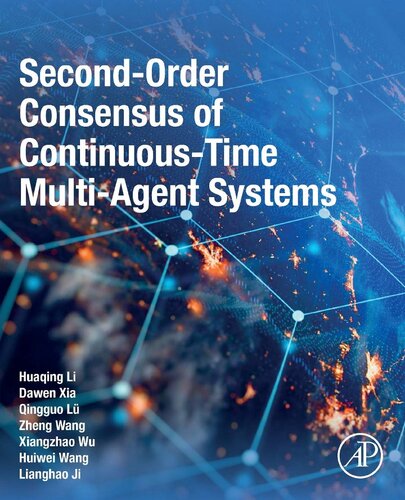

Most ebook files are in PDF format, so you can easily read them using various software such as Foxit Reader or directly on the Google Chrome browser.
Some ebook files are released by publishers in other formats such as .awz, .mobi, .epub, .fb2, etc. You may need to install specific software to read these formats on mobile/PC, such as Calibre.
Please read the tutorial at this link: https://ebookbell.com/faq
We offer FREE conversion to the popular formats you request; however, this may take some time. Therefore, right after payment, please email us, and we will try to provide the service as quickly as possible.
For some exceptional file formats or broken links (if any), please refrain from opening any disputes. Instead, email us first, and we will try to assist within a maximum of 6 hours.
EbookBell Team

4.4
62 reviewsSecond-Order Consensus of Continuous-Time Multi-Agent Systems focuses on the characteristics and features of second-order agents, communication networks, and control protocols/algorithms in continuous consensus of multi-agent systems. The book provides readers with background on consensus control of multi-agent systems and introduces the intrinsic characteristics of second-order agents’ behavior, including the development of continuous control protocols/algorithms over various types of underlying communication networks, as well as the implementation of computation- and communication-efficient strategies in the execution of protocols/algorithms. The book's authors also provide coverage of the frameworks of stability analysis, algebraic criteria and performance evaluation.
On this basis, the book provides an in-depth study of intrinsic nonlinear dynamics from agents’ perspective, coverage of unbalanced directed topology, random switching topology, event-triggered communication, and random link failure, from a communication networks’ perspective, as well as leader-following control, finite-time control, and global consensus control, from a protocols/algorithms’ perspective. Finally, simulation results including practical application examples are presented to illustrate the effectiveness and the practicability of the control protocols and algorithms proposed in this book.